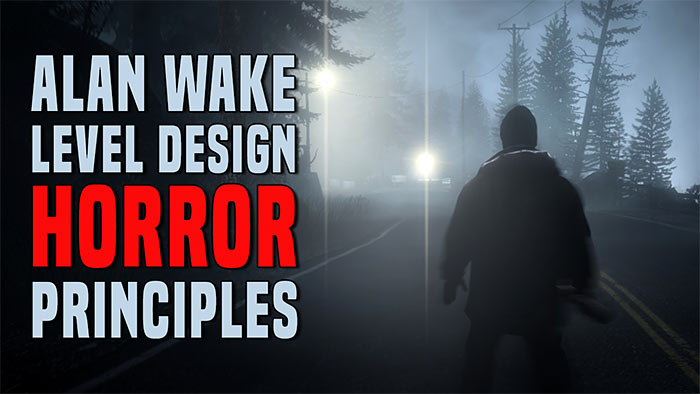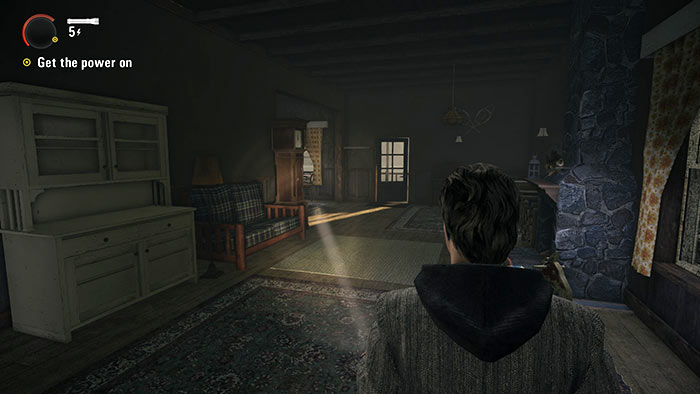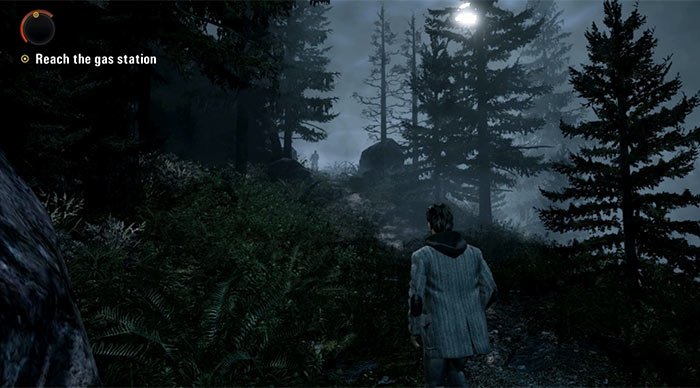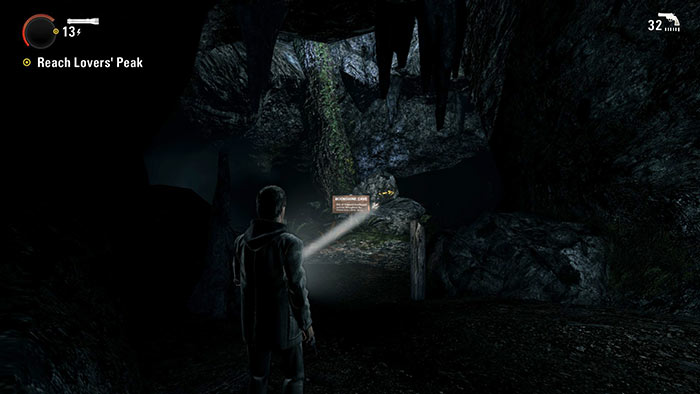World of Level Design™
Tutorials to Becoming the Best Level Designer and Game Environment Artist (since 2008)
3 Level Design Horror Principles to Induce Fear into Your Environments and Game as Seen in "Alan Wake"
Category: Level Design
September 21, 2023

Jump scare is one of the most commonly used techniques in movies and games designed to scare you.
A jump scare where there is an abrupt change of an image often combined with sound.
But you can only use this a few times before it begins to lose its effectiveness. Plus it is often seen as a cheap trick to scare the player.
What you need to do instead is create a tense atmosphere to keep the player engaged, curious yet scared as they explore your game world?
Alan Wake does this well with 3 simple yet effective principles:
- Isolation
- Contrast
- Fear of the unknown
Let's breakdown how "Alan Wake" used these 3 principles to create horror in their level designs.
Important Note: Following tutorial (like all tutorials on WoLD) is based on my own experience, opinions and conclusions as I was playing the game. Nothing here reflects what the developer or the publisher might have intended or did not intend as they were creating the game. These are opinions and conclusions I reached.
Video Tutorial
Principle #1: Isolation
Isolation is being alone.
In Alan Wake, isolation is created through environment locations and environment setting.
The game takes place in the Pacific Northwest. You traverse alone and at night through forests, hiking trails, abandoned towns and mining caves. Places you wouldn't want to be alone in real life.
Forests:

Hiking trails of National Parks:

Abandoned towns:

Mining Caves:

Industrial buildings:

None of these places feel comfortable. Especially at night. The only comfort you get is with a flashlight in your left hand and a gun in your right.
No one is coming to save you, in fact, everyone and everything is out to kill you.
The feeling of isolation creates tension and fear.
How to Use This: Create isolation through environment locations such as abandoned buildings or rural areas absent of people and through environment setting such as night, rain or fog.
Principle #2: Contrast
You can't have light without dark, day without night or pleasure without pain.
Alan Wake uses contrast to create safety vs danger. The game introduces you to the calm, peaceful life of Bright Falls - friendly people, inviting atmosphere and beautiful landscape.
Everything in Bright Falls is tranquil during the day and in the light. You are free to explore the town, chat with locals and enjoy a cup of coffee.

But once the night comes, everything changes. The town and its people change.
With these stark opposites, the game creates tension.
You need moments of peace, calmness and joy before despair, violence and pain.
The key is to balance out contrasting elements. Otherwise the scare will not be as effective.
You first explore many locations of Bright Falls during the day. You talk to the locals, experience more of game's story and learn the layout. Such places include Oh Deer Diner, Cauldron Lake, Cauldron Lake Lodge, Elderwood Visitor Center, Sparkling River Estates and Sheriff's Station.
This creates calm before the storm.
Then, night comes, mood changes and tension is created. Each location becomes a place to escape from and survive.
Here are just a few of the locations during the daytime and then at night.
Bird Leg Cabin:


Sheriff Station:


Elderwood Visitor Center:


Then within each level further tension is created through contrast of light and dark, quiet and loud, peace and violence.
First time you experience this contrast is in the diner. It is a very calm, inviting atmosphere as you talk with Rusty, Rose and Anderson's brothers. After you talk with Cynthia Weaver and you go towards the bathrooms, atmosphere changes. Diner sounds fade and sinister mood sets in.


Another example is after arriving to the Cauldron Lake with Alice and exploring the dark cabin. It is warm, beautiful sunset and gorgeous landscape of the Pacific Northwest.

The lights are off in the cabin and Alice won't go in. As soon as you step your foot inside the cabin, the mood changes. You become uneasy, tense and anxious.

There are many other examples of contrast such as the foreshadowing of combat events, where the calmness of the woods changes into windy, foggy and sinister atmosphere all around you.

Or showing the player light, and then taking the hope away as they get closer.

How to Use This: With opposing and contrasting elements you can effectively control the emotional response of the player. From calm to nervous, from warm to cold, from light to dark, from peace to violence and from pleasure to pain.
Principle #3: Fear of the Unknown
The unknown will cause anxiety, worry, fear and stress.
It is instinctual to want to avoid things you don't know, don't understand and can't explain. This is why most people don't go into dark caves, abandoned houses or dark basements.
In some of the best horror films, the evil entity doesn't appear until almost halfway into the movie. Keeping the tension high and letting the viewer fill in the gaps with their own imagination.
Imagination will produce more anxiety-induced thoughts than with visuals alone.
The more you can keep the player guessing and imagining, the more tension you will build.
Candyman didn't appear in the movie until about 45 minutes in. First half was just the buildup, the stories, the myth.

Hannibal Lector was in the movie for sum total of about 14 minutes, but he was the most frightening character in the film. Far more interesting and horrifying than Buffalo Bill, who was the main villain.

Focus on creating isolation and contrast then fear of the unknown will become the icing on the cake. Final piece of the puzzle you need.
Some "fear of the unknown" examples in Alan Wake are.
Silhouette of the taken that appears on the pathway and then disappears.

The dark forces of the Tornado, a consistent element in the game. Only in the end you find out what it truly stands for:

The creepy, breathing sounds when you get closer to the stashed away supply containers:

Walking into new cabins, bathrooms or other new areas:

Exploring further into the darkness:

Coming back to previous areas where you've been to during the daytime, when everything was peaceful and happy:

Heading into the areas of danger such as heading towards the Visitor Center after seeing the destruction ahead:

Or coming back to Rusty after you hear him scream and die in agony:

How to Use This: Use "fear of the unknown" by implying more than you reveal. Let the player use their imagination more hearing things or seeing visuals at a distance.
Support World of Level Design
If you enjoyed and got a lot out of this tutorial then consider supporting World of Level Design with a donation or purchasing any of the in-depth courses from WoLD Store.
This website is 100% supported by you. I don't run sponsored posts or get paid to promote anything by anyone. I create tutorials for you.
Home Terms of Use/Trademarks/Disclaimers Privacy Policy Donate About Contact
All content on this website is copyrighted ©2008-2024 World of Level Design LLC. All rights reserved.
Duplication and distribution is illegal and strictly prohibited.
World of Level Design LLC is an independent company. World of Level Design website, its tutorials and products are not endorsed, sponsored or approved by any mentioned companies on this website in any way. All content is based on my own personal experimentation, experience and opinion. World of Level Design™ and 11 Day Level Design™ are trademarks of AlexG.
Template powered by w3.css


 Maya Foundation: Home-Study Course - Model and UV Environments
Maya Foundation: Home-Study Course - Model and UV Environments Substance 3D Painter Essentials - Master Texturing
Substance 3D Painter Essentials - Master Texturing UE5: Fundamentals Vol.1 - Create with Unreal Engine 5
UE5: Fundamentals Vol.1 - Create with Unreal Engine 5 UE5: Retro Office Project - Create Beautiful Interior Env
UE5: Retro Office Project - Create Beautiful Interior Env UE5: Master Material Creation - Create Master Materials in UE5
UE5: Master Material Creation - Create Master Materials in UE5
